
Menu
Menu

Menu
The Access to Justice Survey: Decoding Delays. Part I: Civil Cases
- /
- Articles and Blogposts /
- The Access to Justice Survey: Decoding Delays. Part I: Civil Cases
Earlier this year, DAKSH India conducted the ‘Access to Justice’ Survey, where,through a method of random sampling,researchers interviewed over 9000 litigants, spread over 300 locations. Of these, 4696 litigants had civil disputes pending before the courts. In this blog post we analyse these civil cases. In particular, we examine those cases which have been pending for more than 5 years in the court of first instance. Our analysis is aimed at understanding what are the characteristics of these cases, and whether there is any pattern to the kinds of cases that are likely to witness such long pendency.
A total of 449 out of 4696 cases surveyed(9.6%) were pending in the court of first instance for more than 5 years.Going forward, we refer to the total dataset of 4696 cases as the ‘Overall Sample’ and the 449 cases pending for more than 5 years as the ‘5 Years Sample’. To support various arguments made in the blog, statistical analysis (regression, chi square distribution and expected frequency) were applied. We start with the assumption that in a judicial system of equal rights and opportunities of equal representation which allows equal access to all litigants, one would expect to find a similar distribution of cases, regardless of litigant type, in the 5 Years Sample as compared to the Overall Sample. In this blog post we test whether this proposition is true.
A. Plaintiff type
In the Overall Sample the distribution of cases based on plaintiff characteristics is as follows:
 Table 1: Plaintiff Type vs. Defendant Type in Overall Sample
Table 1: Plaintiff Type vs. Defendant Type in Overall Sample
The distribution of cases in the 5 Years Sample is as shown below:
 Table 2: Plaintiff Type vs. Defendant Type in 5 Year Sample
Table 2: Plaintiff Type vs. Defendant Type in 5 Year Sample
The following Tables show how many cases we should except to find in the 5 Years sample, based on the composition of the Overall Sample. The table compares this number to the actual numbers of plaintiffs of each type in cases that take less than 5 years and those that take more than 5 years.
 Table 3: Excepted v. Actual Frequency Distribution Table for Plaintiffs
Table 3: Excepted v. Actual Frequency Distribution Table for Plaintiffs
 Table 4: Excepted v. Actual Frequency Distribution Table for Defendants
Table 4: Excepted v. Actual Frequency Distribution Table for Defendants
Individual Litigants
We see from Table 3 that Individual Plaintiffs are overrepresented in the 5 Years sample, while other types of plaintiffs are under-represented. Table 1 and 2 show that for Individual Plaintiffs we see an increase of 7.9% in the 5 Year Sample as compared to the Overall Sample[(87.53-81.11/81.11)*100 = 7.91%]. On the other hand, there is a drop in the percentage share of the pending cases in the 5 Years Sample for every other plaintiff category. This implies that Individual plaintiffs are more likely to take longer to get a final decision from the courts.
Focusing on the data where the plaintiff is an Individual we get the following results:
 Table 5: Overall Sample
Table 5: Overall Sample

Table 6: 5 Year Sample
When we break down the cases of the Individual plaintiffs as compared to the type of defendant, we find that the delay centres around cases where the Defendant/Respondent is the Government. Section 80 of the Code of Civil Procedure, 1908 requires a mandatory 2 month notice period for filing a suit against the State. Only if the state fails to act in this time period, or does not act to the satisfaction of the plaintiff, can the aggrieved plaintiff approach the court. So we should expect these cases to take a bit longer than other cases. However, we find a substantial increase in pendency of over 5 years. In the Overall Sample there are 631 cases with Individual as plaintiff and the Government as defendant. However, in the 5 Year Sample there are 86 such cases, which is an increase of 42.54% than the overall institution rate [(19.15-13.44/13.44)*100 = 42.54%].
This is a matter of concern for two reasons (1) the government is the largest repeat player in the legal system. If its cases take the longest, then that is likely to have a systemic impact on the entire case load; (2) more importantly, litigation against the government is a crucial mechanism to make the government accountable for its actions. Such litigation therefore has significant social consequences and is part of the rule of law enhancing function of litigation. Delays in the disposal of such cases,if they are due to the plaintiff, tie up valuable government resources in litigation or if they are due to the government, has the impact of delaying justice for individual litigants.
Looking at Individuals as Defendants, we find the opposite trend. As Table 4 shows, Individual defendants are under-represented in the 5 Years Sample, while both Corporate Defendants and Government Defendants are over-represented. This implies that when individuals are taken to court, such cases are less likely to be delayed, as compared to those cases where corporations and governmental authorities are sued. Put another way, when corporations and governmental authorities are sued, plaintiffs are more likely to face delays than when individuals are sued.
Corporate Litigants
Now,if we look at the trends emerging from the data analysis of pending cases filed by Corporate Entities, we see thatcorporate plaintiffs are under-represented in the 5 years sample compared to the overall sample (Table 3). The presence of corporate plaintiffs in the Overall Sample is 1.6% and the pendency rate in the 5 Year Sample is 0.89%. Therefore, the possibility of such cases taking more than 5 years is almost half of their overall institution rate. [(0.89/1.6)*100 = 55.63%]. Table 3 confirms the finding that Corporate Plaintiffs are under-represented in the 5 Years Sample.
However, if we look at cases in which corporate entities are involved as Defendants, their percentage share in the Overall Sample is 2.6%, whereas in the 5 Year Sample it is 3.12%, which is a jump of 20% {[(3.12-2.6/2.6)*100] = 20%} over the over the institution rate.Table 4 confirms this finding, and shows that corporate defendants are over-represented in the 5 Years Sample.
Government as Litigant
Similar trends are visible in cases where the Government is a litigant. The Government as Plaintiff is under-represented in the 5 Years sample (Table 3). Compared to the overall institution rate, it is 20.63% {[(4.77/3.79)*100]-100% = 20.63%} less likely to have its case pending for more than 5 years. However, when it is a defendantit is 36.5% {[(19.82/14.52)*100]-100% = 36.5%} more likely to have cases pending for more than 5 years, compared to the overall institution rate.
Taken together, it appears that the type of litigant has an impact on how long the case takes in the Court of First Instance.
Regression Analysis
To confirm our findings above, we ran regressions on the data to understand the impact of the type of litigant on the duration of the case. The regression analysis shows that there is 95% certainty that there exists a correlation between plaintiff type and case duration.
The results also reflectan 85% certainty that as compared to a Corporate plaintiff a case filed by the Government is 1.48 times more likely to take 5 years or more. Compared to a corporate plaintiff an individual plaintiff is 2.07 times more likely to face pendency of more than 5 years.
Regression Analysis also confirms with 95% certainty that the type of Defendant has an impact over pendency. In comparison to an Individual as Defendant, a Corporate Defendant is 1.27 times more likely to delay the system. And with the Government Defendant the likelihood of pendency for more than 5 years is 1.47 times than an Individual as Defendant.
What does this analysis tell us? When individuals approach the court, they are more likely to face delays, as compared to corporate and governmental entities. Put another way, corporate and government entities are less likely to face delays when they approach courts, as compared to individuals. However, when corporate and governmental entities are sued, their cases are more likely to be delayed compared to when individuals are taken to court. This indicates that delay in cases is not random. Rather, powerful parties can mould the process in their favour so as to delay cases when they are sued, and to secure relief in a timely manner, when they need to approach the courts. Individual plaintiffs, who are not as likely to have such power, are therefore more likely to face delays when they seek relief from the judiciary.
Of course, it is possible in specific cases that the delay is being actively perpetrated by an individual litigant who wants the case to linger in order to seek bargains outside the judicial process. While this might be true in specific instances, there is nothing to suggest that all individual litigants do this, or crucially, that this trend is confined only to individual litigants. Both these assumptions would have to be true to explain the trends observed above.
B. Educational Qualifications
Not all individuals are similarly placed, of course. We wanted to understand what impact an individual’s socio-economic profile has on the pendency of her case. To do so, we have used educational qualifications of the individual litigants who were surveyed, as a rough proxy for their socio-economic profile. We observe the following trends:
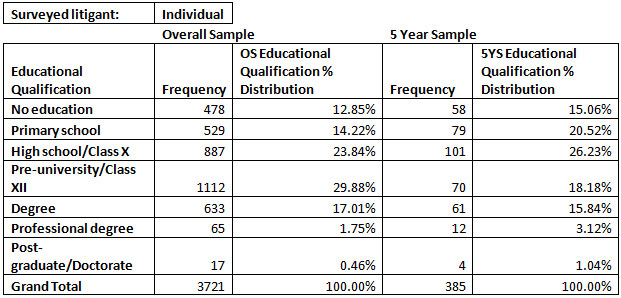 Table 7: Comparison of Educational Qualifications of Individual Litigants in
Table 7: Comparison of Educational Qualifications of Individual Litigants in
Overall and 5 Year Samples
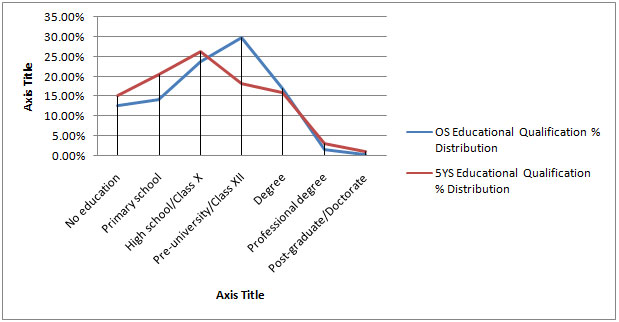 Graph 1: Educational Qualification of ‘Individual’ litigants
Graph 1: Educational Qualification of ‘Individual’ litigants
Note: The original dataset on educational qualifications included 129 “diploma cases”. However, given the varied kind of diploma courses available, we could not accurately determine where to place this category in the hierarchy of educational qualifications. Therefore, these 129 cases have been omitted from the calculations.
The graph and table above detail the educational qualifications of individual litigants. Similar patterns were observed for both plaintiffs and defendants. From the above graph and the table it can be seen that those who are at the lower end of the education spectrum are over-represented in the 5 Years Sample, as compared to their presence in the Overall Sample. This trend reverses for those with higher educational attainments. Interestingly, at the top end – those with professional degrees or post-graduate and doctorate degrees, we see another reversal. Their cases are again more likely to witness pendency compared to the overall sample. This appears counter-intuitive, since one would presume that those with the highest educational attainments (and therefore likely the most powerful amongst individual litigants) would be able to have their disputes resolved faster than others. One possible reason for this pattern could be that people of higher educational qualifications are more likely to approach the Courts for cases relating to land/property or recovery of money, which (as we discuss below) are the most delayed cases. We therefore analysed the subject matter distribution for individual litigants from this educational group. We found that about half the cases filed by this group relate to land/property and recovery of money matters (51.2%). These cases are over-represented in the 5 Years Sample, clocking in at 68.75%. All other categories of cases are underrepresented in the 5 Years Sample for this group. Thus we see that delays for persons in this category come from the types of suits they are involved in. They more likely to be involved in cases involving land/property or recovery of money than other suit categories. These two categories of cases are themselves more likely to face delays. This possibly explains why despite wielding more socio-economic power, person in the highest echelons of education are likely to witness increased pendency.
Barring this departure though, we see that individual litigants with no or low educational attainments (and therefore presumably belonging to lower socio-economic groups) are more likely to face delays in the resolution of their disputes as compared to persons with higher educational attainments. This is of course not a surprising finding. It merely confirms the intuition that delays in the civil justice process are not random, but part of a pattern which disproportionately impacts disempowered litigants.
C.Subject Matter
Next, we studied the impact of the subject matter of the suit, upon pendency of a case. Table 8 shows the distribution of cases by the subject matter of the suit.
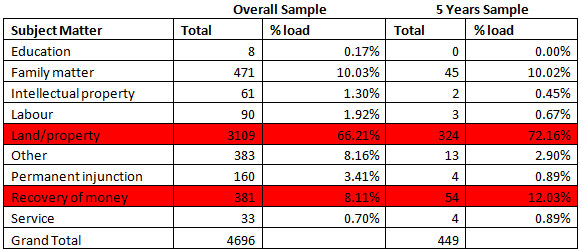 Table 8: Subject Matter of the Suit
Table 8: Subject Matter of the Suit
As evident from the table above, cases involving Land/property and Recovery of Money are over-represented in the 5 Years sample as compared to the overall sample.Recovery of Money suitssee a rise of 48.23% {[(12.03/8.11)*100]-100%=48.23%} in 5 years pendency as compared to the Overall Sample.Land/ Property matters show corresponding rise of 9% {[(72.16/66.21)*100]-100% = 9%}.
Regression Analysis shows with 95% Confidence Level that the subject matter of a case influences its pendency. More specifically, we find that ‘Land/property’ matters are 1.36 times more likely to witness pendency of over 5 years compared to all other suits. Recovery of Money matters are 1.64 times more likely to witness pendency of over 5 years, as compared to all other suits. Both types of suits – involving Land/Property and Recovery of Money – are crucial for a well-functioning economy. DAKSH’S Access to Justice Report had already found that delay causes a loss of 0.5% GDP annually to the country. This finding that suits most directly related to a well-functioning economic system are the most likely to be delayed, adds another layer of concern about the economic costs of delays.
D.Conclusions
From the above we find that there is a pattern behind pendency of cases in the courts. Powerful parties have the ability to mould the system in their favour and obtain early relief when they approach the courts, but delay the matter when they are sued. Similarly, the most disempowered segments of the population (as measure by educational qualifications) are more likely to face delays in their cases as compared to comparatively better off persons. Finally, we find that the subject matter of a case impacts its likelihood of long pendency. Suits most directly connected with a well-functioning economy are more likely to face delays compared to other types of cases. This raises concerns about the economic costs of delays.
The views expressed in this article are solely those of the authors’ and they do not represent the views of DAKSH.
This work by DAKSH Society is licensed under a Creative Commons Attribution-NonCommercial-NoDerivatives 4.0 International License.
RECENT ARTICLES

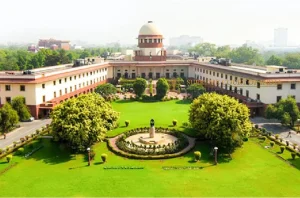
Lessons for Judiciary from Space Sector
admin
December 10, 2025
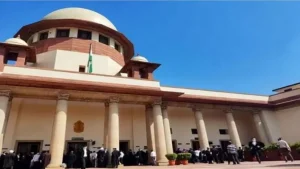
The missing piece in India’s reform story—a strong tribunal system
admin
December 3, 2025

Fast-track courts may not be the cure
admin
December 2, 2025

-
Rule of Law ProjectRule of Law Project
-
Access to Justice SurveyAccess to Justice Survey
-
BlogBlog
-
Contact UsContact Us
-
Statistics and ReportsStatistics and Reports
© 2021 DAKSH India. All rights reserved
Powered by Oy Media Solutions
Designed by GGWP Design
